Mergers & Acquisitions
Problem description
Company acquisitions can be a cause of celebration – for management. But the real work starts in the IT department – almost before the ink’s dry on the contracts and the champagne glasses emptied. That’s because buyers don’t only acquire markets, employees and customers – they’re getting IT systems too, which can easily run into the hundreds in a large firm. Yet companies restructure quite often, especially large enterprises and corporations. This frequently leads to partial sales – known as divestments of business – for business, company strategy, or antitrust reasons. The buyer is counting on the seller to hand over in full all relevant information, data as well as documents, about the business to enable them to continue running it. They may need the information for other purposes, such as restructuring and resale or to ensure they are meeting fiscal or data protection regulations.
Read more
The challenge facing the seller is how to identify, extract and hand over only the information relating to the business unit to be sold – nothing else. This is often a time-consuming and complex endeavor that is also very costly, because the information is often stored in different systems, especially in larger companies. These systems include ERP as well as other third-party solutions for maintenance, procurement, sales etc.
Repercussions
From a business perspective, it makes no sense to continue running legacy systems following an acquisition or merger. But just shutting them down is also not an option. After all, they contain valuable data and documents that are like hard cash to the buyer. This information is also subject to various retention obligations and periods. Even after the acquisition, it will need to be retained for years, possibly even decades. It may also need to be made available to the authorities upon request until its controlled and documented deletion, as the EU’s General Data Protection Regulation (GDPR) requires.
Read more
This is why company acquisitions always mean complex integration and migration projects for IT departments. They need to decide which of the acquired company’s applications they will take on and which are no longer required. This begs the question of which data and documents are to be migrated into the live systems.
For a business divestment, the seller’s main concern is that they must not, under any circumstances, hand over more information than is strictly necessary to the buyer. This is particularly acute if the company or business unit is being sold to a competitor: it is crucial for the seller to ensure that they’re not revealing any business-related trade secrets.
The buyer, on the other hand, has a major interest in receiving the information in a format that won’t hamper their business or IT projects. For example, they may be faced with an extensive conversion project – costing valuable time as well as money – if they are using an ERP or other system from a different vendor or a different release from the same vendor.
Impact
Continuing to run legacy systems is one of the main reasons companies spend about 80 percent of their entire IT budget on operations. They may also expose a buyer to compliance and security risks if the systems it has taken on can’t be reliably maintained or secured with regular security patches.
Read more
However, migrating all of the legacy data isn’t the solution to this problem either. Firstly, this type of project is very time-consuming because it is technically demanding, which also makes it expensive. Secondly, the structure of the data and documents to be migrated will need to be changed for this kind of project. Internal and external auditors can’t be sure that the migrated information corresponds exactly to the original. As a result, the buyer would need to keep operating the old systems that it inherited with the acquired company, even if it only decided to migrate a part of the data and documents from those systems. And it would need to adapt them to comply with new regulations like the GDPR. With many legacy systems, ensuring this compliance is not even technically possible, or only with a huge amount of work. Either way, the result is extremely costly.
Companies are becoming increasingly digital. If digitalized information falls into the wrong hands during an acquisition process, in the worst case this could even threaten the survival of the previous owner, regardless of how large or market-leading the company is. That’s why sellers need a simple and cost-effective way of ensuring that the data and documents to be handed over are separated from the rest in as precise and compliant a way as possible.
Another issue when handing over business information is that it makes no sense to create a CD with the original ERP data for the buyers. They would need weeks or even months to install and configure the appropriate solution in order to be able to import and read the data. A knock-on effect of this could be that they may have to postpone their planned migration to a new software generation, such as SAP S/4HANA, until they’re able to import the data and documents they acquired with the company into their own systems. During the negotiation phase, buyers increasingly stipulate that the relevant business information is handed over in a modern and neutral format.
Solution
The solution is clearly to shut down the systems that are no longer required. But before retiring the applications, the company must migrate all of the information – data and documents – onto a centralized, neutral platform and store them in a modern data format.
Read more
This is not the same thing as traditional archiving. After all, business users, like internal and external auditors, do not access fields in tables, but search for things like all the orders a customer made in a specific timeframe; payroll information for certain employees; or supplier correspondence and contracts. That’s why the information must be stored together with its business context and, if necessary, encrypted. This concept is called historicization.
This kind of platform offers a multitude of standard interfaces to legacy systems from various vendors. Absolutely all the information from the legacy systems is captured and migrated, and every step is fully documented. The platform enables companies to delete data and documents at the level of individual data records and to clearly define authorizations. It goes without saying that such a platform meets all the requirements of auditors and has been certified by them.
JiVS IMP is the name of this modern, central Information Management Platform that enables companies to manage the entire life cycle of historical information, both data and documents. Using JiVS IMP, information from legacy systems can be historicized and its lifecycle managed according to internal and external regulations such as the EU GDPR – from the transfer of the legacy system data to the documented final deletion. Sensitive data can be stored encrypted.
As standard, JiVS IMP offers multiple of interfaces to legacy systems from various vendors such as Baan, Microsoft Axapta, Oracle ERP, Peoplesoft and of course SAP. In total, the platform supports more than 2000 business objects in enterprise solutions – and over 1200 for SAP systems alone.
In addition, JiVS IMP is the solution that is able to meet all the parties’ requirements during the acquisition of a company or business unit. It’s a neutral, cost-effective and centralized platform for cleansing data, storing it in a legally watertight way, and only handing over the relevant information when the business unit is sold. All the business information is available to the buyers in a neutral and legally-compliant format, ready to be used.
JiVS IMP stores the data and documents together with their business context. For example, buyers can search for and view all invoices for a specific customer, just as they would in the original system. This is why it’s more accurate to refer to the historicization of business information rather than archiving. As buyers usually only want to transfer a part of the historicized information to their live environment, they can use JiVS IMP to select and then transfer the data and documents into the destination systems as required.
For M&A and business divestment projects, JiVS IMP acts as a central collection and provisioning point, known as a data staging area, for company information. Data and its quality can be analyzed and optimized, such as by enriching and harmonizing it. Also, analyses of the information pool’s reduction potential can be created, while the filter rules to reduce the data volume can be defined before the transfer and made available in a neutral format for its subsequent transformation and migration. Once the migration is complete, JiVS IMP provides legally compliant access to the information independently of the device type, time and location. It also subjects the legacy information to end-to-end retention management for the seamless management of the historical data and documents’ lifecycle. In addition, JiVS IMP’s business object-focused approach provides the option of integrating the platform in the target environments, such as SAP S/4HANA or SAP C/4HANA.
The full benefit of JiVS IMP’s data staging area comes to the fore during the following four-step migration process:
a. Housekeeping
JiVS IMP is the solution to the problem of what to do with legacy data. The information management platform enables companies to deal with data and documents that are no longer required in day-to-day operations. They can manage the information together with its business logic across its whole lifecycle – from their removal from productive systems to legally-compliant storage to final deletion.
The most important point about housekeeping, however, is that the historical information remains accessible at all times. This ensures that companies only need to migrate the data they’re going to need in their day-to-day business, such as open orders.
b. Identify
Once the information pool has been transferred from the legacy systems to JiVS IMP, companies can start analyzing which data they need, if any. This called the Identify phase. To facilitate this, JiVS IMP provides an analysis tool with a wide range of parameterization options. For example, a company could select and sort the legacy information by orders that are older than six months and have therefore already been completed; by company codes; or by plants that no longer exist. Other selection criteria in the context of a data reduction potential analysis (DRPA) would include organizational units, master data and transaction data types, or certain business objects. This DRPA results in reports for management in the form of whitelists or blacklists that specify which tables and fields are to be transferred or are no longer required.
c. Design
Once a company has clarified which information is operational and which is historical, it can use JiVS IMP to start the detailed planning of data selection and migration in the design phase. The selection criteria from the identify phase are then further refined and tested, so that the reduction in the data pool can be automatically carried out by the software.
d. Transform
At the end of the design phase, JiVS IMP provides accurate and tested filter rules as whitelists and blacklists. This gives customers the choice of which tools they want to use to transform and migrate the data to the destination systems.
Customers can implement JiVS IMP in their own data center or use the public cloud for implementation. Supported environments include Amazon Web Services, the Google Cloud Platform, and Microsoft Azure. Customers can also choose from a variety of popular database management systems (DBMS), such as IBM Db2, Oracle Database, Microsoft SQL Server and SAP IQ.
Customer benefits
Using JiVS IMP, both live and legacy systems can be decommissioned following a company acquisition. This usually allows companies to save about 80 percent or more in operating costs compared to keeping the old systems running. In addition, they benefit by reducing the scope and complexity of the planned migration projects because they only need to keep or move the really necessary data and documents to the live systems. This usually only amounts to between 5 and 25 percent of the data pool.
Read more
In addition, JiVS IMP helps companies meet all of the regulatory requirements governing the management of the information lifecycle, such as the GDPR’s directives. As a centralized platform for managing legacy data and documents, JiVS IMP also provides a higher level of security because companies only have a single system to protect from cyber-attacks and security vulnerabilities.
Another benefit is that the historicized information is still available for users to view, although they won’t be able to change anything. If historical data and documents need to be reactivated for editing, they can be migrated from JiVS IMP to the destination system. As the original files stay unchanged on the platform, there is no risk to compliance or auditability requirements.
When handing over business data in the event of a company sale or carve-out, the historicization approach also ensures legal certainty on both the buyer’s and seller’s side while reducing the staff, time and financial resources needed for this type of project. Today, spin-offs of business units are part of an agile business strategy. As a simple, fast and cost-effective solution, the historicization approach for business information makes a significant contribution to a company’s agility.
In parallel, this approach protects a company’s intellectual property when part of it is being restructured or sold, especially if competitors are involved in the purchase. That makes JiVS IMP a useful part of a company’s overall risk management.
Finally, this approach can also be used for several other strategic initiatives, such as application retirement and decommissioning legacy systems or for migration to new software generations such as SAP S/4HANA. In all cases, JiVS IMP acts as the central corporate platform for legacy data and documents, managing them in a legally compliant manner throughout their entire life cycle, including their controlled and definitive deletion.
Price and availability
JiVS IMP is available now. The functional scope and pricing are defined on a project-specific basis. Customers can choose to subscribe to the platform’s functionality as a service, enabling them to transfer capital expenditure to operating expenditure.
SUCCESS STORIES
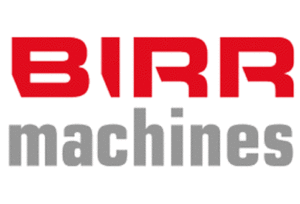

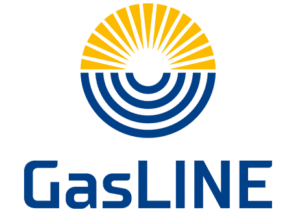
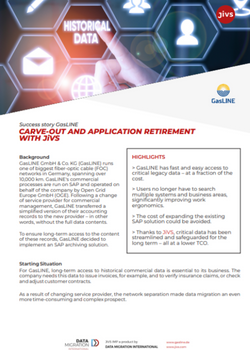
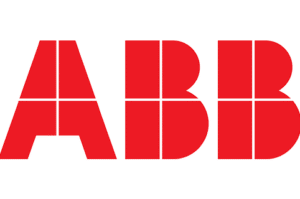
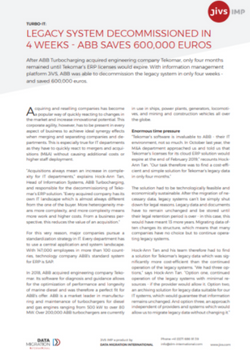
READ THE SUCCESS STORY
READ THE SUCCESS STORY
READ THE SUCCESS STORY
Would you like to discuss this usecase with our JiVS Expert?
Please fill out this short form and we will get back to you asap.
1
Problem description
Company acquisitions can be a cause of celebration – for management. But the real work starts in the IT department – almost before the ink’s dry on the contracts and the champagne glasses emptied. That’s because buyers don’t only acquire markets, employees and customers – they’re getting IT systems too, which can easily run into the hundreds in a large firm. Yet companies restructure quite often, especially large enterprises and corporations. This frequently leads to partial sales – known as divestments of business – for business, company strategy, or antitrust reasons. The buyer is counting on the seller to hand over in full all relevant information, data as well as documents, about the business to enable them to continue running it. They may need the information for other purposes, such as restructuring and resale or to ensure they are meeting fiscal or data protection regulations.
Read more
The challenge facing the seller is how to identify, extract and hand over only the information relating to the business unit to be sold – nothing else. This is often a time-consuming and complex endeavor that is also very costly, because the information is often stored in different systems, especially in larger companies. These systems include ERP as well as other third-party solutions for maintenance, procurement, sales etc.
2
Repercussions
From a business perspective, it makes no sense to continue running legacy systems following an acquisition or merger. But just shutting them down is also not an option. After all, they contain valuable data and documents that are like hard cash to the buyer. This information is also subject to various retention obligations and periods. Even after the acquisition, it will need to be retained for years, possibly even decades. It may also need to be made available to the authorities upon request until its controlled and documented deletion, as the EU’s General Data Protection Regulation (GDPR) requires.
Read more
This is why company acquisitions always mean complex integration and migration projects for IT departments. They need to decide which of the acquired company’s applications they will take on and which are no longer required. This begs the question of which data and documents are to be migrated into the live systems.
For a business divestment, the seller’s main concern is that they must not, under any circumstances, hand over more information than is strictly necessary to the buyer. This is particularly acute if the company or business unit is being sold to a competitor: it is crucial for the seller to ensure that they’re not revealing any business-related trade secrets.
The buyer, on the other hand, has a major interest in receiving the information in a format that won’t hamper their business or IT projects. For example, they may be faced with an extensive conversion project – costing valuable time as well as money – if they are using an ERP or other system from a different vendor or a different release from the same vendor.
3
Impact
Continuing to run legacy systems is one of the main reasons companies spend about 80 percent of their entire IT budget on operations. They may also expose a buyer to compliance and security risks if the systems it has taken on can’t be reliably maintained or secured with regular security patches.
Read more
However, migrating all of the legacy data isn’t the solution to this problem either. Firstly, this type of project is very time-consuming because it is technically demanding, which also makes it expensive. Secondly, the structure of the data and documents to be migrated will need to be changed for this kind of project. Internal and external auditors can’t be sure that the migrated information corresponds exactly to the original. As a result, the buyer would need to keep operating the old systems that it inherited with the acquired company, even if it only decided to migrate a part of the data and documents from those systems. And it would need to adapt them to comply with new regulations like the GDPR. With many legacy systems, ensuring this compliance is not even technically possible, or only with a huge amount of work. Either way, the result is extremely costly.
Companies are becoming increasingly digital. If digitalized information falls into the wrong hands during an acquisition process, in the worst case this could even threaten the survival of the previous owner, regardless of how large or market-leading the company is. That’s why sellers need a simple and cost-effective way of ensuring that the data and documents to be handed over are separated from the rest in as precise and compliant a way as possible.
Another issue when handing over business information is that it makes no sense to create a CD with the original ERP data for the buyers. They would need weeks or even months to install and configure the appropriate solution in order to be able to import and read the data. A knock-on effect of this could be that they may have to postpone their planned migration to a new software generation, such as SAP S/4HANA, until they’re able to import the data and documents they acquired with the company into their own systems. During the negotiation phase, buyers increasingly stipulate that the relevant business information is handed over in a modern and neutral format.
4
Solution
The solution is clearly to shut down the systems that are no longer required. But before retiring the applications, the company must migrate all of the information – data and documents – onto a centralized, neutral platform and store them in a modern data format.
Read more
This is not the same thing as traditional archiving. After all, business users, like internal and external auditors, do not access fields in tables, but search for things like all the orders a customer made in a specific timeframe; payroll information for certain employees; or supplier correspondence and contracts. That’s why the information must be stored together with its business context and, if necessary, encrypted. This concept is called historicization.
This kind of platform offers a multitude of standard interfaces to legacy systems from various vendors. Absolutely all the information from the legacy systems is captured and migrated, and every step is fully documented. The platform enables companies to delete data and documents at the level of individual data records and to clearly define authorizations. It goes without saying that such a platform meets all the requirements of auditors and has been certified by them.
JiVS IMP is the name of this modern, central Information Management Platform that enables companies to manage the entire life cycle of historical information, both data and documents. Using JiVS IMP, information from legacy systems can be historicized and its lifecycle managed according to internal and external regulations such as the EU GDPR – from the transfer of the legacy system data to the documented final deletion. Sensitive data can be stored encrypted.
As standard, JiVS IMP offers multiple of interfaces to legacy systems from various vendors such as Baan, Microsoft Axapta, Oracle ERP, Peoplesoft and of course SAP. In total, the platform supports more than 2000 business objects in enterprise solutions – and over 1200 for SAP systems alone.
In addition, JiVS IMP is the solution that is able to meet all the parties’ requirements during the acquisition of a company or business unit. It’s a neutral, cost-effective and centralized platform for cleansing data, storing it in a legally watertight way, and only handing over the relevant information when the business unit is sold. All the business information is available to the buyers in a neutral and legally-compliant format, ready to be used.
JiVS IMP stores the data and documents together with their business context. For example, buyers can search for and view all invoices for a specific customer, just as they would in the original system. This is why it’s more accurate to refer to the historicization of business information rather than archiving. As buyers usually only want to transfer a part of the historicized information to their live environment, they can use JiVS IMP to select and then transfer the data and documents into the destination systems as required.
For M&A and business divestment projects, JiVS IMP acts as a central collection and provisioning point, known as a data staging area, for company information. Data and its quality can be analyzed and optimized, such as by enriching and harmonizing it. Also, analyses of the information pool’s reduction potential can be created, while the filter rules to reduce the data volume can be defined before the transfer and made available in a neutral format for its subsequent transformation and migration. Once the migration is complete, JiVS IMP provides legally compliant access to the information independently of the device type, time and location. It also subjects the legacy information to end-to-end retention management for the seamless management of the historical data and documents’ lifecycle. In addition, JiVS IMP’s business object-focused approach provides the option of integrating the platform in the target environments, such as SAP S/4HANA or SAP C/4HANA.
The full benefit of JiVS IMP’s data staging area comes to the fore during the following four-step migration process:
a. Housekeeping
JiVS IMP is the solution to the problem of what to do with legacy data. The information management platform enables companies to deal with data and documents that are no longer required in day-to-day operations. They can manage the information together with its business logic across its whole lifecycle – from their removal from productive systems to legally-compliant storage to final deletion.
The most important point about housekeeping, however, is that the historical information remains accessible at all times. This ensures that companies only need to migrate the data they’re going to need in their day-to-day business, such as open orders.
b. Identify
Once the information pool has been transferred from the legacy systems to JiVS IMP, companies can start analyzing which data they need, if any. This called the Identify phase. To facilitate this, JiVS IMP provides an analysis tool with a wide range of parameterization options. For example, a company could select and sort the legacy information by orders that are older than six months and have therefore already been completed; by company codes; or by plants that no longer exist. Other selection criteria in the context of a data reduction potential analysis (DRPA) would include organizational units, master data and transaction data types, or certain business objects. This DRPA results in reports for management in the form of whitelists or blacklists that specify which tables and fields are to be transferred or are no longer required.
c. Design
Once a company has clarified which information is operational and which is historical, it can use JiVS IMP to start the detailed planning of data selection and migration in the design phase. The selection criteria from the identify phase are then further refined and tested, so that the reduction in the data pool can be automatically carried out by the software.
d. Transform
At the end of the design phase, JiVS IMP provides accurate and tested filter rules as whitelists and blacklists. This gives customers the choice of which tools they want to use to transform and migrate the data to the destination systems.
Customers can implement JiVS IMP in their own data center or use the public cloud for implementation. Supported environments include Amazon Web Services, the Google Cloud Platform, and Microsoft Azure. Customers can also choose from a variety of popular database management systems (DBMS), such as IBM Db2, Oracle Database, Microsoft SQL Server and SAP IQ.
5
Customer benefits
Using JiVS IMP, both live and legacy systems can be decommissioned following a company acquisition. This usually allows companies to save about 80 percent or more in operating costs compared to keeping the old systems running. In addition, they benefit by reducing the scope and complexity of the planned migration projects because they only need to keep or move the really necessary data and documents to the live systems. This usually only amounts to between 5 and 25 percent of the data pool.
Read more
In addition, JiVS IMP helps companies meet all of the regulatory requirements governing the management of the information lifecycle, such as the GDPR’s directives. As a centralized platform for managing legacy data and documents, JiVS IMP also provides a higher level of security because companies only have a single system to protect from cyber-attacks and security vulnerabilities.
Another benefit is that the historicized information is still available for users to view, although they won’t be able to change anything. If historical data and documents need to be reactivated for editing, they can be migrated from JiVS IMP to the destination system. As the original files stay unchanged on the platform, there is no risk to compliance or auditability requirements.
When handing over business data in the event of a company sale or carve-out, the historicization approach also ensures legal certainty on both the buyer’s and seller’s side while reducing the staff, time and financial resources needed for this type of project. Today, spin-offs of business units are part of an agile business strategy. As a simple, fast and cost-effective solution, the historicization approach for business information makes a significant contribution to a company’s agility.
In parallel, this approach protects a company’s intellectual property when part of it is being restructured or sold, especially if competitors are involved in the purchase. That makes JiVS IMP a useful part of a company’s overall risk management.
Finally, this approach can also be used for several other strategic initiatives, such as application retirement and decommissioning legacy systems or for migration to new software generations such as SAP S/4HANA. In all cases, JiVS IMP acts as the central corporate platform for legacy data and documents, managing them in a legally compliant manner throughout their entire life cycle, including their controlled and definitive deletion.
6
Price and availability
JiVS IMP is available now. The functional scope and pricing are defined on a project-specific basis. Customers can choose to subscribe to the platform’s functionality as a service, enabling them to transfer capital expenditure to operating expenditure (OPEX).
Would you like to discuss this usecase with our JiVS Expert?
Please fill out this short form and we will get back to you asap.
